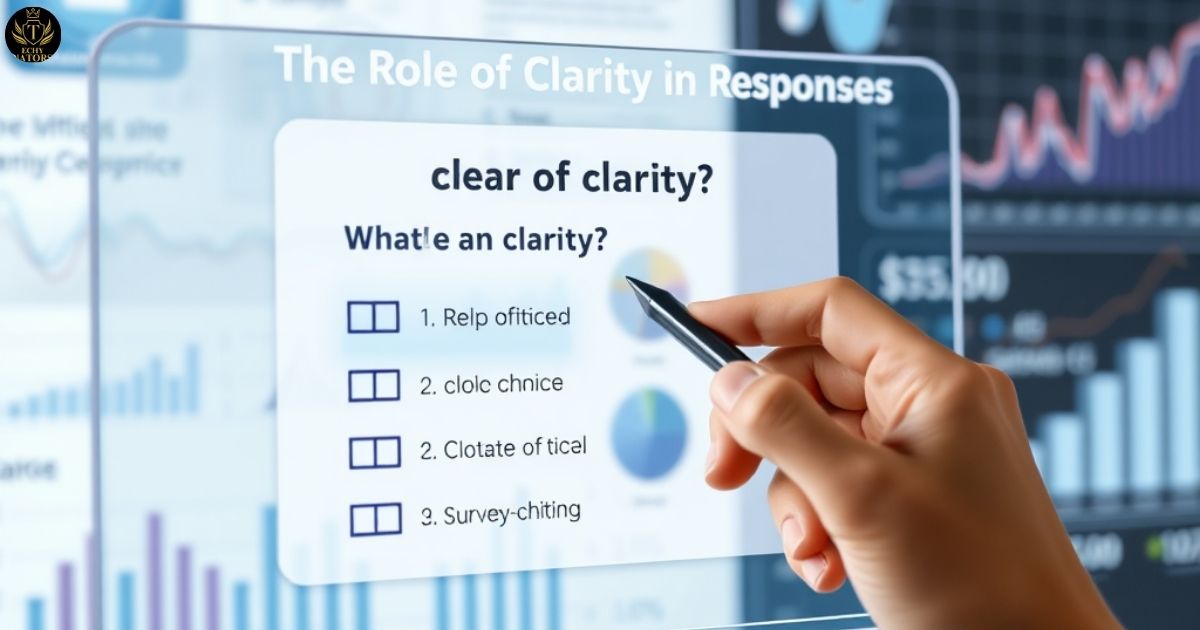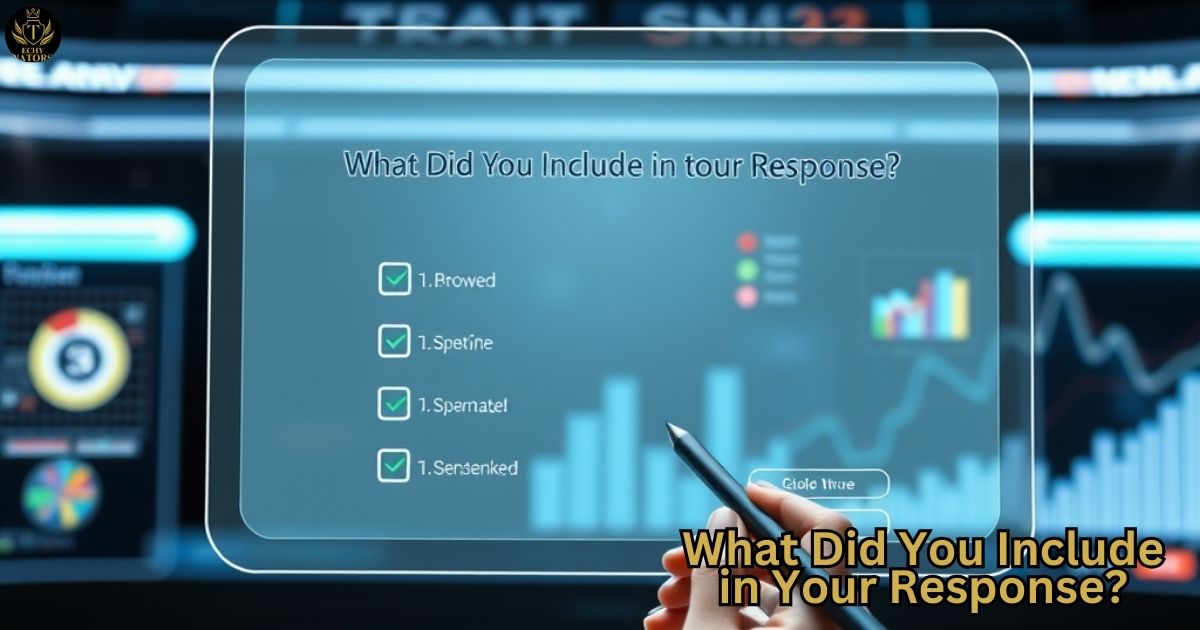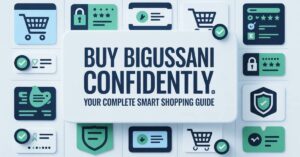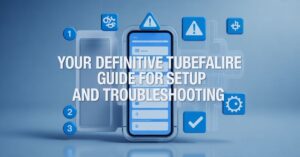In today’s fast-paced world, the ability to communicate effectively is more crucial than ever. Whether you’re responding to an email, a customer service query, or even a text message, how you reply can make a big difference in your relationships, your work, and even your success.
But what exactly should you include in your response? It’s not just about answering the question—it’s about making your response clear, thoughtful, and impactful. In this post, we’ll dive into the strategies for crafting better responses, focusing on clarity, structure, tone, and personalization.
The Role of Clarity in Responses

One of the most important aspects of a response is clarity. If your message isn’t clear, the person reading it may not fully understand what you’re trying to say. This can lead to confusion, mistakes, or even frustration. In fact, a lack of clarity can completely derail a conversation or task. That’s why being clear and precise in your response is essential.
When crafting a response, ensure you are avoiding any ambiguity. Ambiguity can make your response feel vague and leave room for misinterpretation. To ensure precision, focus on providing specific details that directly address the question or concern at hand.
For example, instead of saying, “I might get back to you soon,” it’s much clearer to say, “I will reply by 3 PM tomorrow.” This small change not only makes your response more actionable but also builds trust and reliability.
When you’re clear in your communication, the other person knows exactly what to expect, reducing any unnecessary back-and-forth or confusion.
Key Elements to Include in a Response
Every response should include certain key elements that ensure it’s comprehensive and useful. First, always provide the context and background information necessary for the reader to understand your response. If you’re answering a complex question, don’t assume the person already knows everything you do. Instead, take the time to explain things in a way that’s easy to follow.
Next, be sure that your response addresses all aspects of the query. Sometimes, we might focus only on one part of a question, but a complete answer requires looking at every angle. By doing this, you show that you’ve considered the full picture, which adds credibility to your reply. For example, if someone asks about your product’s features and pricing, don’t just mention the price—explain the benefits, features, and any extra perks, too.
Another important element is to use examples and analogies. These help make your explanation more relatable. If you’re explaining a technical concept, try comparing it to something familiar. For instance, if you’re explaining a complex piece of software, you could say, “Think of it like an email inbox, where you store all your tasks instead of messages.” This approach makes your response easier to understand and more engaging.
The Importance of Structured Responses
Structured responses help your communication become more efficient and easier to digest. A well-structured response organizes ideas logically, guiding the reader through your thoughts in a way that makes sense. This is especially important when responding to inquiries in professional settings, where the clarity of your response can determine how well your ideas are understood.
A structured response typically follows a clear flow. Start with an introduction or summary of the key points. Then, expand on each of these points in the body of your response, making sure to answer each question fully. Finally, end with a conclusion or call to action, leaving the reader with a clear next step.
For example, if someone asks you to provide a solution to a problem, begin by outlining the problem in simple terms. Then, move into the possible solutions, detailing each one and the steps needed. Conclude with a summary of the best course of action.
The structure of your response impacts how your message is perceived. Well-structured responses are more likely to be read, understood, and acted upon, making your communication more effective.
Why Tone Matters in Responses
Tone is a crucial part of any response. It’s not just about what you say, but how you say it. A well-crafted response should match the tone of the situation. For example, a formal tone is appropriate in professional or business settings, while a more casual tone may be better suited for personal or informal conversations.
When crafting your response, be sure to adapt your tone to your audience. A friendly and conversational tone can make you seem approachable, while a formal tone might make your communication feel more serious or professional. However, it’s important not to overdo formality or friendliness, as both extremes can come off as insincere. Striking the right balance is key to making your responses both effective and engaging.
The tone should also reflect empathy and understanding, especially when responding to complaints or sensitive topics. Showing that you care can turn a negative situation into a positive one.
Common Mistakes to Avoid
When responding to queries or requests, there are several common mistakes that can weaken your message. One of the biggest mistakes is overloading with information. While you want to be thorough, providing too much detail can overwhelm the reader. Keep your response focused on the key points and avoid adding unnecessary information that might distract from the main message.
Another mistake is ignoring the query’s core purpose. It’s easy to get caught up in tangential issues or offer overly technical explanations, but it’s important to stay on topic and answer the person’s question directly. When your response strays too far from the original inquiry, it can confuse the reader and leave them frustrated.
Lastly, avoid sounding too robotic. A personalized response will always resonate more with the reader than a generic one. Try to address the person directly, using their name or referring to their specific question.
The Power of Personalization
Personalization makes your responses more meaningful. By tailoring your message to the individual, you show that you’ve taken the time to understand their specific needs or concerns. Personalization can be as simple as using the person’s name or referencing something they’ve mentioned in the past.
When you personalize your response, you also create a stronger connection with the reader. People appreciate when their concerns are taken seriously, and when they feel heard, they are more likely to trust your judgment. Additionally, personalized responses make the reader feel valued, which can increase engagement and satisfaction.
In customer service, for example, personalized responses are key. A simple “Thank you for your purchase, John” is much better than a generic “Thank you for your purchase.” This small detail shows the reader that you care about them as an individual.
Tools and Techniques to Enhance Responses
There are many tools and techniques available to help you craft better responses. For instance, using grammar and spell-check tools can ensure your response is error-free. These tools help refine your communication, making it clearer and more professional. Another technique is to read your response out loud before sending it. This helps you catch awkward phrasing or any unclear points that might confuse the reader.
There are also tools that can help you structure your response better. For example, outlining your response in bullet points or numbering key sections can help organize your thoughts. Additionally, certain communication platforms offer templates that make responding quicker and easier while ensuring consistency.
Benefits of Well-Inclusive Responses
When you include all necessary details in your response, it improves engagement and understanding. A well-inclusive response leaves the reader with little room for confusion, ensuring that all their questions or concerns have been addressed. This builds trust and credibility, two important factors in any successful communication.
Moreover, a thoughtful response can lead to more satisfied recipients. Whether you’re answering a colleague’s query or responding to a customer’s complaint, taking the time to craft a well-inclusive response shows that you value the interaction. This, in turn, can improve relationships and encourage further positive engagement.
Measuring the Effectiveness of a Response
To assess the effectiveness of your responses, you should track engagement metrics. Look at how the reader responds—are they satisfied with your reply? Did they ask follow-up questions? If the response is part of a larger communication campaign, you can use analytics to measure how well the message is being received.
Feedback can also provide valuable insights into how well you’re communicating. If you notice that your responses aren’t having the desired effect, consider refining your approach or adjusting your strategies. By constantly seeking feedback, you can improve your response techniques over time.
Conclusion
Effective communication is the backbone of every successful interaction, whether personal or professional. By crafting better responses with clarity, structure, tone, and personalization, you can ensure that your communication is not only understood but also appreciated. Keep refining your strategies and use the right tools to make sure your responses are impactful, precise, and meaningful.
FAQ’s
How can I ensure my response is inclusive?
You can ensure your response is inclusive by providing all necessary details, addressing every part of the question, and avoiding unnecessary jargon that might confuse the reader.
What tools can help me refine my response?
Grammar checkers, readability tools, and response templates are all useful in refining your response. They help ensure your message is clear, error-free, and professional.
Why is tone so important in crafting a response?
Tone helps convey the emotion and intention behind your words. It can make your response seem friendly or formal, depending on the situation, and ensures you communicate your message effectively.
What’s a common mistake people make when responding?
One common mistake is overloading a response with too much information. This can overwhelm the reader and dilute the core message.
How can I measure the success of my response?
You can measure success by tracking how the reader responds, whether they follow up, and by using feedback or analytics tools to assess engagement levels.

Hi, I’m James Anderson, a tech writer with 5 years of experience in technology content. I’m passionate about sharing insightful stories about groundbreaking innovations, tech trends, and remarkable advancements. Through Techynators.com, I bring you in-depth, well-researched, and engaging articles that keep you both informed and excited about the evolving world of technology. Let’s explore the future of tech together!








